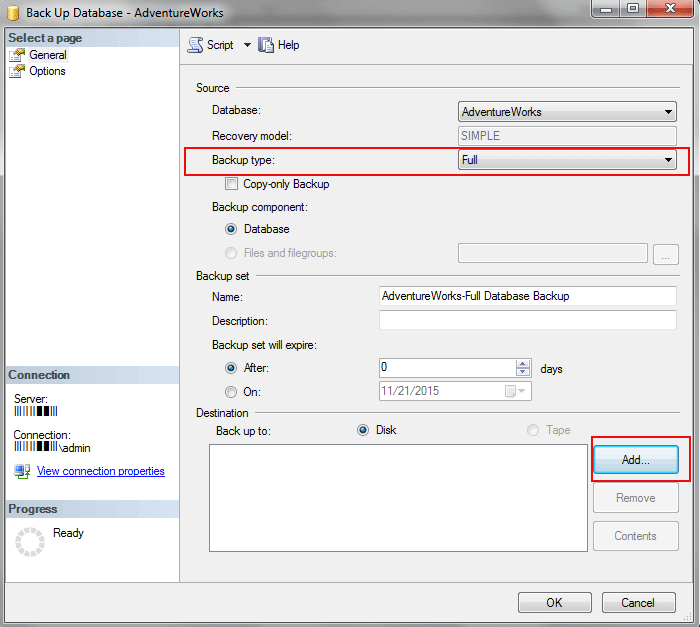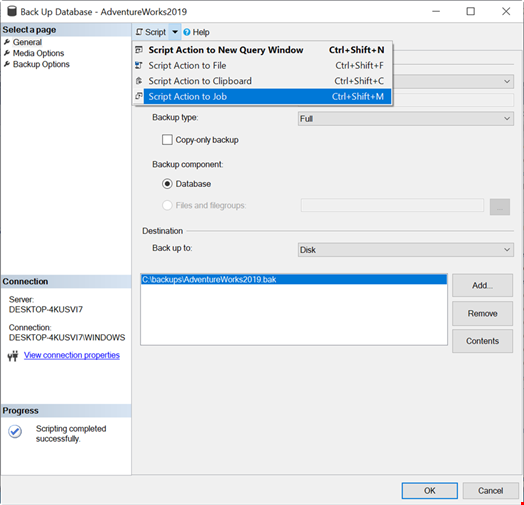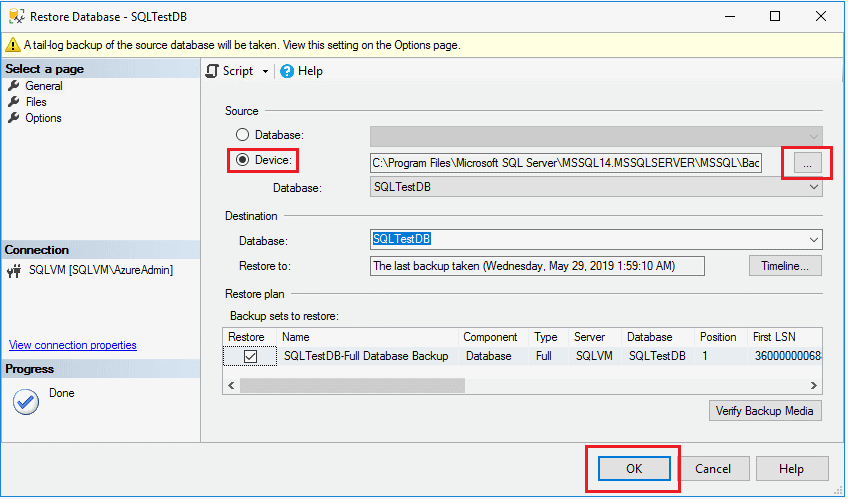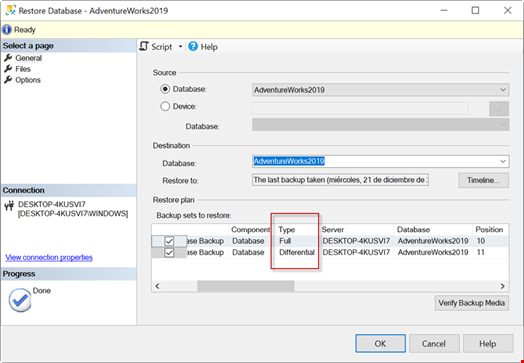Microsoft SQL Server (MSSQL) is a popular relational database management application that facilitates data storage and access in your organization. Backing up and restoring your MSSQL database is crucial for maintaining data integrity and availability.
By regularly creating backups, you can protect your data from corruption or loss. In the event of system failure or error, the restore operation can help you recover your data efficiently.
Whether your database is small or large, understanding how to perform MSSQL backup and restore operations ensures your data can remain secure and accessible. This article guides you through the complete process of backing up and restoring the MSSQL database using SQL Server Management Studio or Transact SQL.
Hevo is the only real-time ELT No-code Data Pipeline platform that cost-effectively automates data pipelines that are flexible to your needs.
Hevo Data offers to you:
- Diverse Connectors: Hevo’s fault-tolerant Data Pipeline offers you a secure option to unify data from 150+ Data Sources (including 60+ free sources) and store it in any other Data Warehouse of your choice.
- Schema Management: Hevo takes away the tedious task of schema management & automatically detects the schema of incoming data and maps it to the schema of your Data Warehouse or Database.
- Incremental Data Load: Hevo allows the transfer of data that has been modified in real-time. This ensures efficient utilization of bandwidth on both ends.
Transform your data integration process with Hevo—seamless, automated, and reliable!
Get Started with Hevo for FreeTable of Contents
Overview of MSSQL Backup and Restore Strategy
You must develop a robust MSSQL backup and restore strategy that aligns with your business needs for data availability in the event of system failures. This strategy can also help minimize data loss and effectively manage backup costs.
For the backup plan, you should specify the type and frequency of backups, hardware requirements, and how to test and store the backups securely. In the restore plan, you must outline who is responsible for conducting restores, how they are to be done, and how to test the quality of restored data.
MSSQL Server allows you to create an effective backup and restore strategy using SQL Server Management Studio (SSMS) or Transact SQL (T-SQL) commands. These tools enable you to copy the data from your MSSQL database to local storage or Azure Blog Storage in .bak format. After a system failure or virus attack, you can restore MSSQL database from bak file using SSMS or T-SQL commands.
Significance of an MSSQL Backup and Restore Operation
Here are a few reasons why you should back up your SQL Server database:
- Resilient to System Failures: Backup MSSQL database can help recover from user errors, such as accidentally dropping a table, and hardware failures, such as damaged disk drives or server loss.
- Azure Blob Storage Backups: Backup MSSQL table data to Azure Blob Storage can help create off-site backups in regions other than your on-premises location. This enables you to recover data swiftly in the event of any incident that impacts your on-premises location.
- Routine Administrative Tasks: Database backups serve routine administrative tasks, including SQL Server migration, database archiving, and AlwaysOn Availability Group.
Database Backups in MSSQL Server
Database backup SQL Server helps your organization keep a copy of your database on disks, tape drives, or URLs, ensuring data recovery in the event of data loss or corruption. SQL Server offers full backups, differential backups, and transactional log backups. Explore backup and restore across environments using SQL Server Docker.
If you are wondering, in MSSQL, how to backup database using each backup type, let’s get started!
What is a Full Database Backup in SQL Server?
Full database backup in MSSQL Server involves keeping all database information. It backs up all the schema objects, including tables, columns, views, indexes, or stored procedures, at a specific point in time. However, the process can be time-consuming and will need more storage space as a database size increases.
The following section entails the step-by-step process for creating and restoring a full database backup using SSMS and T-SQL:
How to Create a Full Database Backup Via SSMS?
Before you begin, you must download and install the SQL Server Management Studio (SSMS) and keep your database ready for backup.
Here are the steps for creating a full backup using SSMS:
- Launch SSMS and connect to your SQL Server.
- From the Object Explorer window, select the database from which you want to create a backup.
- Right-click on the chosen database and choose the Tasks > Back Up.
- In the Back Up Database window, specify the Backup type as Full, the Backup component as Database, and the required destination location.

- To change the destination, select the Remove button to delete the existing path, then click on the Add button to choose the new destination.
- Click OK to create the backup of your SQL Server database.
In SSMS, you can schedule the full database backup to run at a specified time, ensuring it automatically occurs during off-peak hours.
How to Schedule a Full Database Backup Using SSMS?
Perform the following steps to backup database in SQL Server automatically:
- Create a full database backup using the above steps.
- From the Script drop-down menu, click the Script Action to Job.

- Once the New Job dialog appears, choose Steps under Select a page and click the Edit option to change the job parameters.
- Select Schedules and click New.
- In the New Job Schedule dialog box, specify the job name and schedule and click OK.
For more information, read how to schedule a backup automatically.
How to Restore Your Database from a Full Database Backup Using SSMS?
When your data is lost due to a system failure or natural disaster, restore it to the point when the last full backup was taken.
Follow the steps below to restore SQL Server database from the full database backup:
- Open SSMS and connect with your SQL Server database.
- Navigate to the Object Explorer, right-click the Databases node, and select Restore Database.
- In the Restore Database window, select the backup file’s source and the destination database to which you want to restore it.

- Click OK to complete the SQL Server restore.
How to Create a Full Database Backup Via T-SQL?
T-SQL code is a SQL Server language that can help automate the backup process. Follow the steps below to understand how to backup the database in SQL Server using T-SQL:
- Open the command prompt or SSMS’s query window and connect to your SQL Server database.
- Execute the following command:
USE <master_database_name>;
GO
BACKUP DATABASE <database_name>
TO DISK = N'path_to_bak file.bak'
WITH NOFORMAT, NOINIT,
NAME = N'backup_set_name', SKIP, STATS = 10;
GOThis T-SQL command saves your SQL Server backup tables to a specified disk location. The NOFORMAT and NOINT options ensure that the backup file is not overwritten. The code includes options to skip expiration dates and provides progress updates every 10% of the backup process.
How to Restore Your Database from a Full Database Backup Using T-SQL?
You can restore the full backup of your database by executing the following T-SQL code in the command prompt or SSMS’s query window:
USE <master_database_name>;
GO
RESTORE DATABASE <database_name>
FROM DISK = N'path_to_backupfile.bak'
WITH FILE = 1, STATS = 10;
GOWhat is a Differential Backup in SQL Server?
A differential backup relies on the most recent, last full database backup, capturing only the data that has changed since that full backup. Therefore, the full backup, which a differential backup depends on, is referred to as the base of the differential.
Differential backup SQL Server allows for frequent data backups, reducing the risk of data loss. It usually takes less time and storage than a full backup. However, before restoring a differential backup, you must first restore its base. Consequently, restoring from a differential backup involves more steps and time than restoring from a differential backup, as it requires two backup files.
The following section outlines the steps for creating and restoring a differential backup using SSMS and T-SQL.
How to Create a Differential Backup Using SSMS?
Before you begin, ensure that a full database backup is already available. Follow the steps below to create the differential backup using SSMS:
- Start the SSMS and connect to your SQL Server instance.
- Right-click the required database from the Object Explorer and choose Tasks > Back Up.
- In the Back Up Database dialog box, specify the Backup type as Differential, the Backup component as Database, and the required destination path.

- Click OK.
How to Restore Your Database from a Differential Backup Using SSMS?
Follow the steps below for restoring SQL Server from a differential backup using SSMS,
- Navigate to the Object Explorer in SSMS and right-click the database to restore.
- Click the Tasks > Restore > Database option, and choose the SQL Server database to restore.
- In the Restore Database dialog box, select the full and differential backup sets to restore.

- Click OK.
How to Create a Differential Backup Using T-SQL?
Use the following steps to create a backup differential backup using T-SQL:
- Open the command prompt or SSMS query window.
- Execute the below code to create a full database backup:
BACKUP DATABASE <database_name>
TO <backup_device_name>
WITH INIT;
GO- Create a differential backup using the following T-SQL code:
BACKUP DATABASE <database_name>
TO <backup_device_name>
WITH DIFFERENTIAL;
GOAfter executing the above code, the differential approach helps you backup table in MSSQL database and save it on the device where the full backup is written.
How to Restore Your Database from a Differential Backup Using T-SQL?
Follow the below steps to restore the differential backup using T-SQL code:
- Restore the full backup of your database first:
RESTORE DATABASE <database_name>
FROM <backup_device_name>
WITH NORECOVERY;
GO- Restore the differential database backup using the code below:
RESTORE DATABASE <database_name>
FROM <backup_device_name>
WITH FILE = 2,
RECOVERY;
GOThe NORECOVERY option puts your database into the Restoring state, allowing differential backups to be restored. In this state, you cannot access the database to complete the recovery process. Once the differential backup is restored, the RECOVERY option makes the database accessible again to complete the data recovery.
What Is a Transaction Log Backup in SQL Server?
The transaction log backup stores the transaction log of your SQL Server database. It only captures the changes made to the database since the last transaction log backup. Performing a transaction log backup every few minutes enables you to conduct a point-in-time restore and reduce data loss.
How to Create a Transaction Log Backup Using SSMS?
Before creating transaction log backups, you must have at least one full backup.
Let’s have a look at the steps to create the log backups:
- Open SSMS and connect to your SQL Server database instance.
- In the Object Explorer, right-click the required database and click Tasks > Back Up.
- In the Back Up Database window, specify the Backup type as Transaction Log, the Backup component as Database, and the destination path.
- Click OK.
For more information about backup table in SQL Server using log backup, read how to back up a transaction log. You can also create a log backup using T-SQL commands.
How to Restore Your Database from a Transaction Log Backup Using SSMS?
Perform the following steps to restore a log backup using SSMS:
- Go to Object Explorer in SSMS and right-click the database to restore it.
- Click the Tasks > Restore > Database option, and choose the SQL Server database to restore.
- In the Restore Transaction Log dialog box, select the full and required number of transaction log backup sets to restore.
- Click OK.
For more information, read how to restore a transaction log backup. You can also restore the log backup using Transact-SQL.
File or Filegroups Backup in MSSQL Server
When your database is too large and requires high performance, creating a file backup would be an optimal choice instead of a full database backup. A file backup includes all the data within one or more files or file groups. This approach allows you to back up only the necessary parts of the database, reducing the time and storage needed for the backup process.
You can create a file or file group backup using SSMS or T-SQL, which saves copies of the specified files on a backup device. If files are lost during system failures, you can restore the backup using SSMS or T-SQL.
What Are the Best Practices for MSSQL Backup and Restore?
Here are a few best practices you must follow while performing a backup and restore operation in SQL Server:
- Use a secure, offsite location to store backup files, which protects your data from physical damage or theft at the primary site.
- Choose an appropriate recovery model, such as simple, full, or bulk-logged, to determine backup and restore options that suit your database and effectively manage transaction logs.
- Estimate the disk space required for a full database backup using sp_spaceused system stored procedures.
- Schedule a full backup weekly and differential backups daily.
- Test your backups thoroughly by restoring a copy of each database onto a test system.
- Once the backup is restored, you must run database consistency checks using DBCC CHECKDB to ensure that the backup device was not corrupted.
- Verify the stability of the backup device using advanced features like BACKUP CHECKSUM.
- Use the backup_restore_progress_trace XEvent to monitor the live progress of backup and restore operation efficiently.
How Does Hevo Data Help with MSSQL Backup and Restore?
Your organization may need to move log-based data from the SQL Server databases to cloud-based data warehouses for efficient analytics and reporting. However, managing this process can be complex, especially when you must ensure data reliability and timely ingestion into the destination.
To cost-effectively automate the data migration process, consider utilizing Hevo Data, a near-real-time ELT, no-code pipeline platform. With 150+ pre-built connectors, Hevo helps you export data from SQL Server, load it into your preferred destination, and transform it for deeper analysis.
If you face issues with the source connector that interrupts the migration process, Hevo can help you with seamless data re-ingestion. It maintains an encrypted backup of your last three days’ SQL Server source data, allowing you to restore the backup to perform re-ingestion.
In addition, Hevo supports various features like transformation, incremental loading, and automated schema management. The platform allows you to focus entirely on using your data to gain valuable insights and make smart business decisions.
Schedule a demo with Hevo to know more.
Conclusion
The MSSQL backup and restore feature provides an essential way of protecting your organizational data stored in the SQL Server database. By leveraging SQL Server Management Studio or T-SQL commands, you can efficiently manage full, differential, and transaction log backups, as well as file or filegroup backups.
Understanding the types of backups allows you to create the most appropriate backup and restore strategy, which is crucial for safeguarding your SQL Server database. Following the best practices highlighted in this article further improves data protection and recovery.
Want to take Hevo for a spin? Sign Up for a 14-day free trial and experience the feature-rich Hevo suite first hand. You can also have a look at the unbeatable Hevo Pricing that will help you choose the right plan for your business needs.
Frequently Asked Questions (FAQs)
1. How can I view the SQL Backup file without SQL Server?
Use a third-party tool like SQL Backup Restore tool to view the SQL backup file without SQL Server.
2. What can you do if the backup file is corrupted?
If the backup is corrupted, utilize the SQL Toolkit for Microsoft SQL Server. This toolkit includes a Stellar Backup Extractor for the MS SQL module, which allows you to extract the database from a corrupted backup file.
3. What type of MSSQL backup and restore method should I use for my PC?
The choice of a backup and restore method depends on the data and database size. For smaller databases, a full backup might be sufficient. However, for larger databases, consider combining full backups with differential and transaction log backups.




